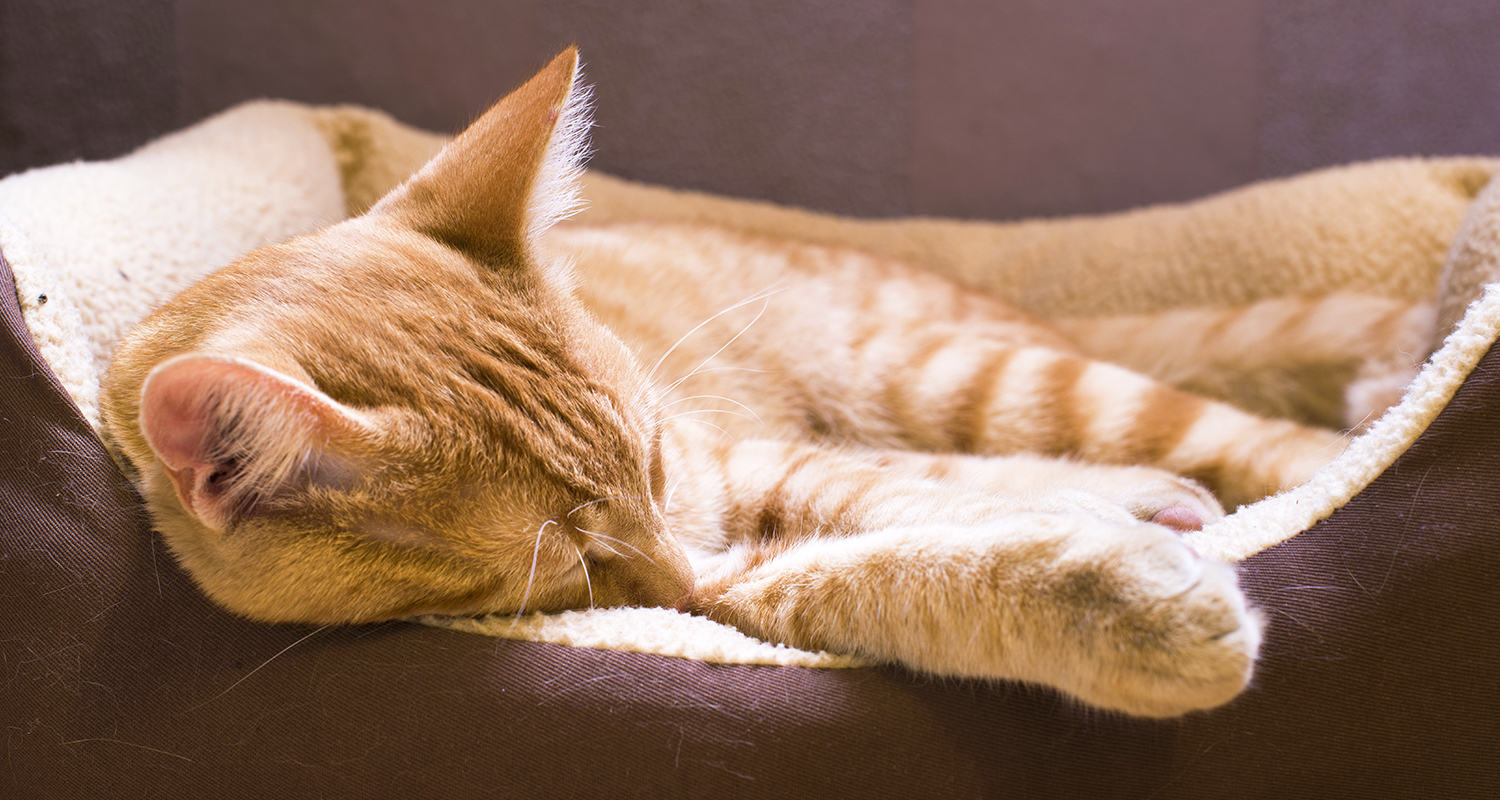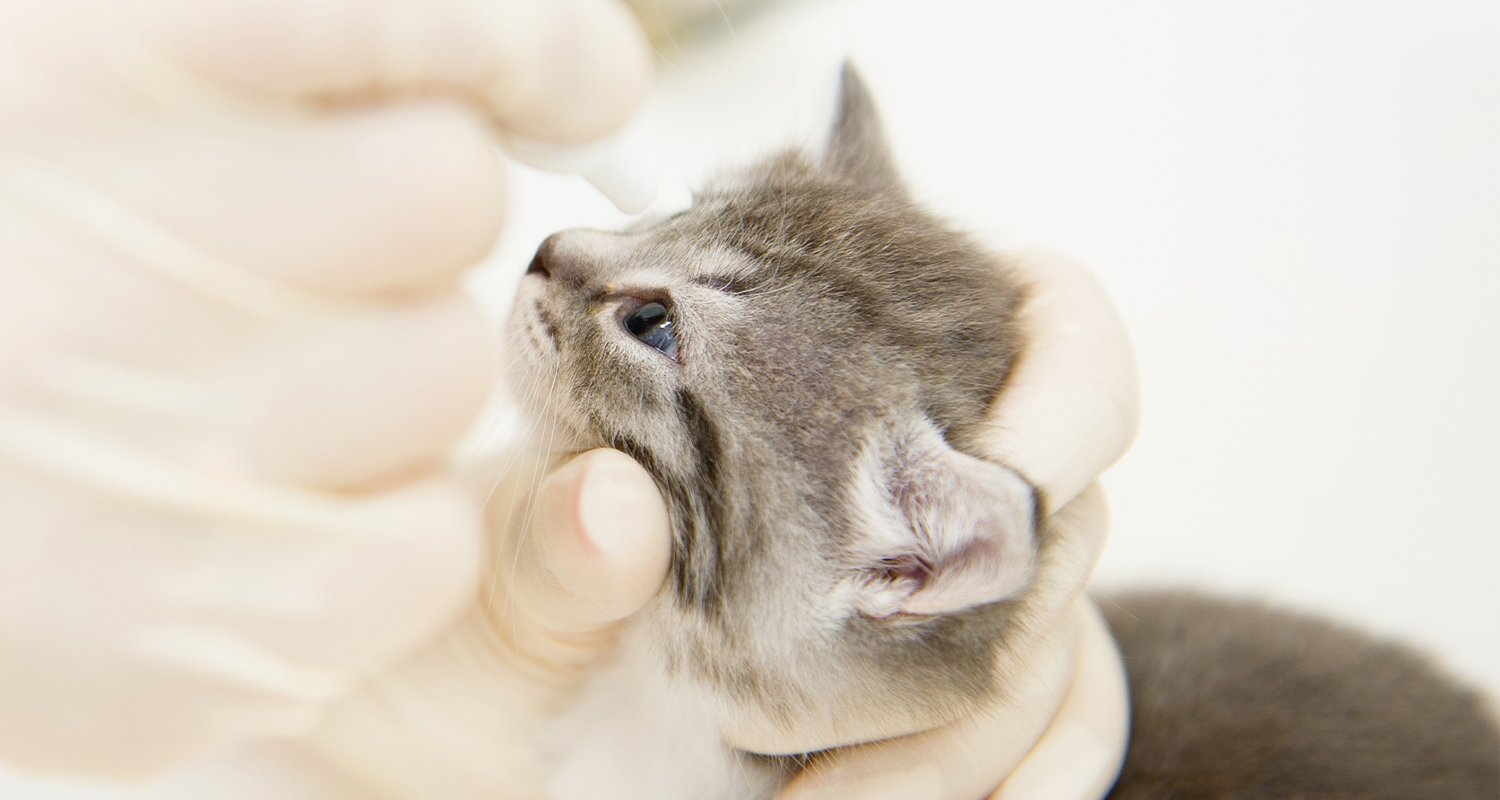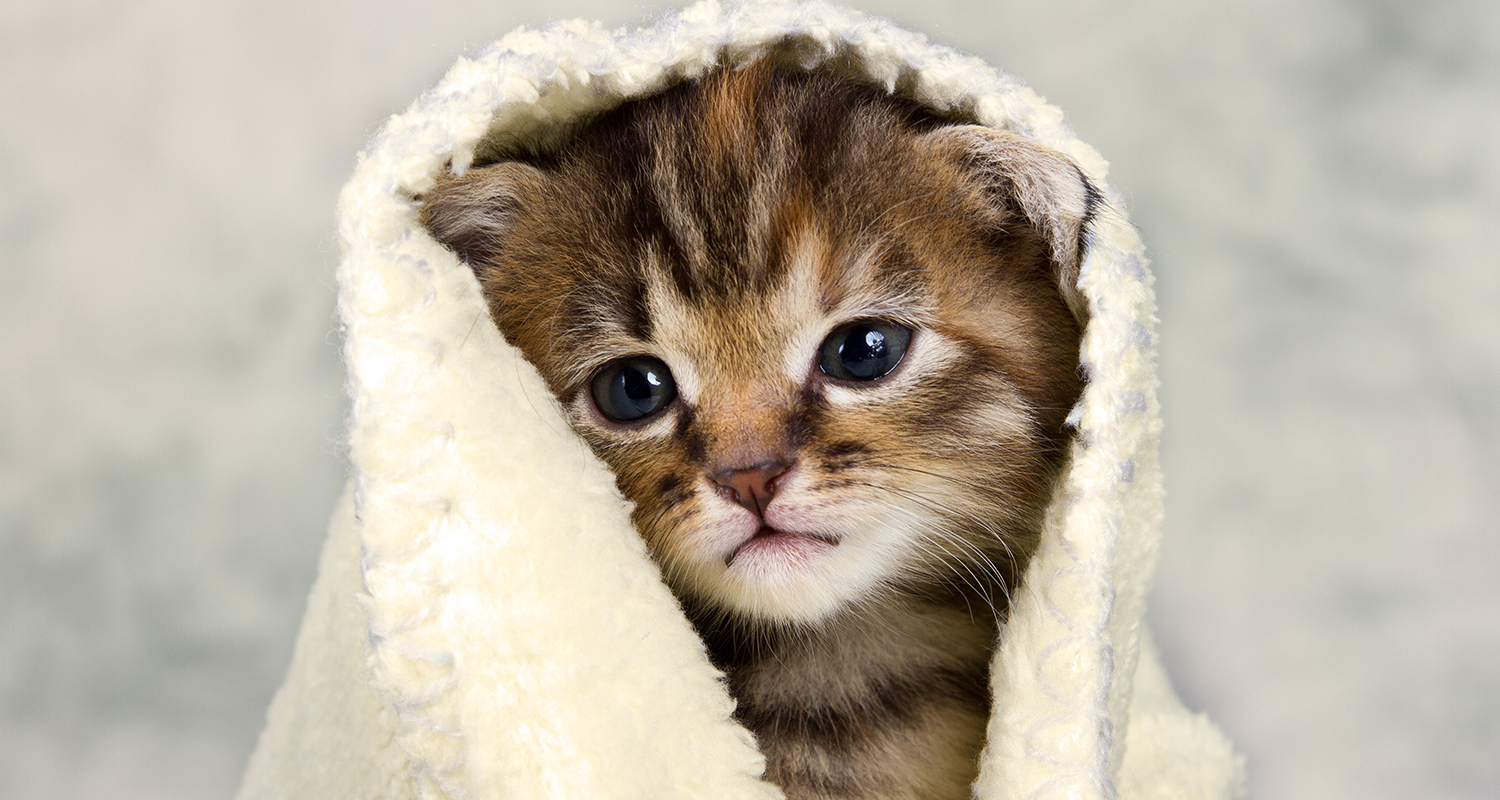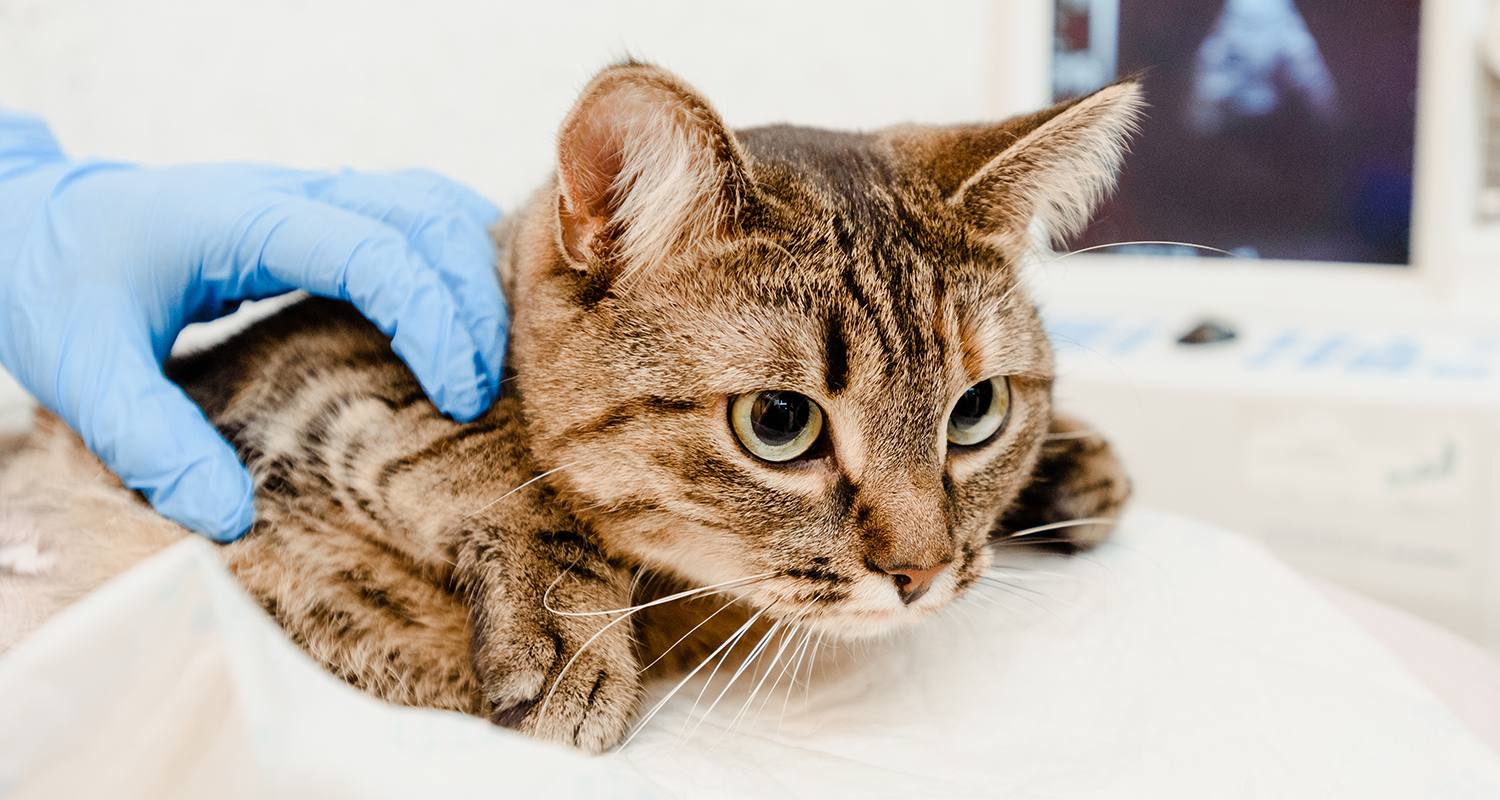
Feline Upper Respiratory Infection (Cat Flu): What It Is, Signs & Symptoms, And How To Treat It
Do cats get the flu?
The answer is yes, but not the kind of flu you might be thinking of. Cat flu is the common name for feline upper respiratory infections with symptoms that are very similar to a human cold.1
It’s important to understand how to care for your cat if they develop cat flu. If left untreated, upper respiratory infections can progress to become life-threatening, especially in kittens and cats with other comorbid illnesses.
Continue reading to learn about what causes cat flu, symptoms to look for, and how you can help your cat recover.
What Is Cat Flu?
Cat flu is a general term for upper respiratory infections caused by certain feline viruses and bacterial infections. These infections mostly affect the nose and throat.
Cat flu affects cats of all ages and breeds. In most cases, it is viral in nature and highly contagious.
Can Cats Get The Flu From Humans?
Cat flu is not caused by an influenza virus, unlike the flus that humans get. Humans cannot catch cat flu, and cats cannot catch human colds or influenza viruses. Cats can become infected from other cats through direct contact, contaminated items such as bowls, beds, and human hands, and occasionally other animals.1,2,11
What Causes Cat Flu?
Feline herpesvirus (FHV-1) and feline calicivirus (FCV) are the most common causes of cat flu, accounting for about 90% of upper respiratory infections in cats.3 Other causes of cat flu include:
- Mycoplasma
- Bordetella
- Feline chlamydiosis4
All cats are susceptible to these infections, however they are more common in catteries and shelters where cats are in close quarters with each other. Once a cat is infected, they can spread it to other cats directly (through saliva and nasal/eye secretions), or indirectly with shared food bowls, toys, beds, or even human hands.5

Cat Flu Symptoms
Symptoms of upper respiratory infections in cats include:
- Lethargy (no energy to play)
- Sneezing
- Runny nose
- Coughing
- Mouth ulcers
- Eye ulcers
- Loss of appetite
- Discharge from eyes
- Difficulty breathing
- Fever6
Infected cats can also develop secondary bacterial infections that worsen symptoms.7 If the respiratory infection becomes severe and is not treated, it can cause lasting eye damage (from eye ulcers), pneumonia, or other complications.
How Is Cat Flu Diagnosed?
Although cat flu is not always serious, it is best to take your cat to the vet before trying to treat the problem at home.
Your vet will run a series of tests to rule out other conditions, as some symptoms of cat flu are similar to cat asthma, chronic bronchitis, and other respiratory conditions. Occasionally, vets will send swabs to a lab to confirm the strain of virus causing the symptoms.8

How To Treat Cat Flu
There are currently no effective antiviral drugs to treat viral upper respiratory infections. If your cat has a primary or secondary bacterial infection, your vet will prescribe antibiotics to help clear it up.
The goal of treatment is to relieve symptoms so the immune system can work to get rid of the infection. Your vet may also prescribe the following to give your cat some relief:
- Eye drops
- Pain medication
- Antiviral agents
Cats who are not eating or drinking because of their symptoms may need to be hospitalized for nutritional support (such as a feeding tube or intravenous fluids).
In addition to medical treatment, there are some things you can do at home to help your cat recover.
Home Remedies For Cat Flu
1. Warm, humid air
Keep a humidifier near your cat, or take them into the bathroom with you as you shower to allow the steam to open their nasal passages.
2. Soft, strong-smelling foods
Cat flu can affect your cat’s sense of smell and a sore throat can make eating uncomfortable. Give your cat soft foods that have been warmed slightly to encourage them to eat.
3. Gentle face washing
Using a warm washcloth, gently wipe your cat’s eyes and nose to remove any secretions.

How Long Does Cat Flu Last?
Cat flu recovery time is around 5 to 10 days for mild cases, and up to 6 weeks in more severe cases.9 The duration of the condition is often related to the type of virus or bacterial infection causing the symptoms.
Cats who have picked up feline herpesvirus will carry it for life. They are often faced with ongoing health problems and are more inclined to catch other bacterial infections. Recurrence of cat flu symptoms in cats who are carriers of FHV can occur in times of stress or if the immune system is compromised.
Feline calicivirus respiratory infections are often milder than FHV. These infections usually clear up within a few weeks, although cats can remain carriers for a few months or even longer after symptoms go away.10
How To Prevent Cat Flu
Since upper respiratory infections are highly contagious, it’s hard to prevent them from spreading. It is best to keep a new cat away from other cats in your house for two weeks to reduce spread of diseases. If one of your cats develops cat flu, keep them quarantined until the symptoms clear.
Although not always 100% effective, there are vaccines available that protect against feline herpes virus and feline calicivirus. Talk to your vet about the options available for your cat.
Most cats recover from cat flu fully if they are treated early on before the condition worsens. If you suspect your cat may have cat flu, take them to the vet right away.

1“Does My Cat Have Cat Flu?” Blue Cross. https://www.bluecross.org.uk/pet-advice/cat-flu
2“What Is Cat Flu And How Is It Managed?” RSPCA Knowledge Base. https://kb.rspca.org.au/knowledge-base/what-is-cat-flu-and-how-is-it-ma….
3“Treating Upper Respiratory Infections in Cats.” PetMD. https://www.petmd.com/cat/conditions/respiratory/treating-upper-respira….
4“Treating Upper Respiratory Infections in Cats.” PetMD. https://www.petmd.com/cat/conditions/respiratory/treating-upper-respira….
5“What Is Cat Flu And How Is It Managed?” RSPCA Knowledge Base. https://kb.rspca.org.au/knowledge-base/what-is-cat-flu-and-how-is-it-ma….
6“Cat Flu – Upper Respiratory Infection.” International Cat Care. https://icatcare.org/advice/cat-flu-upper-respiratory-infection/.
7Laura Playforth, MSc. “Cat Flu: Why Is My Cat Sneezing?” Vets Now. https://www.vets-now.com/pet-care-advice/cat-flu-sneezing/.
8“Cat Flu – Upper Respiratory Infection.” International Cat Care. https://icatcare.org/advice/cat-flu-upper-respiratory-infection/.
9Laura Playforth, MSc. “Cat Flu: Why Is My Cat Sneezing?” Vets Now. https://www.vets-now.com/pet-care-advice/cat-flu-sneezing/.
10“Feline Upper Respiratory Infection.” Pet Health Network. http://www.pethealthnetwork.com/cat-health/cat-diseases-conditions-a-z/feline-upper-respiratory-infection.
11"What to Know About Cat Flu". WebMD. https://www.webmd.com/pets/cats/what-to-know-about-cat-flu
